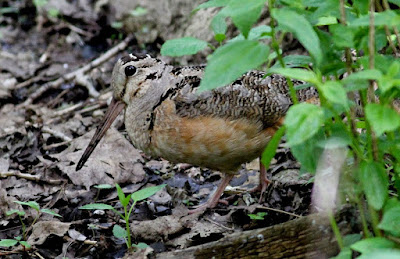Several times a year I may get photographs of a really odd
bird at a feeder. Typically they are very ornately plumaged; such that they
catch the eye of even the most casual of feeder watchers. Almost always the
unknown diner turns out to be an exotic, non-native species that has almost
certainly escaped from captivity. I have encountered some of these exotics in
the field just a few times, and it always causes any birder to do a double-take
upon first glance.
Since wild birds are widely sold kept as part of the pet
trade, the escape of some individuals is inevitable. Often they are tropical
species that do not do well in temperate regions for very long. But in areas
like Florida and southern California some species are hardy enough to establish
themselves for at least a short period of time and actually reproduce and form
small colonies. The birds range from waterfowl
to parrots to finches to gamebirds. Recently I got a report of a ring-necked
pheasant from this area.
Some species are hardy enough to attempt a nesting in more
temperate regions than Florida or California. Currently there is a pair of monk
parakeets nesting in Newland, North Carolina, well to our west. Monk parakeets
are one of the most frequently encountered exotics anywhere in the United
States. Years ago I saw a nest in a power transformer near the site of the
current Ray’s Splash Planet. There is also a pair that has nested just west of
Wilmington, North Carolina for the last few years.
Such occurrences are interesting for their novelty but the
chances are almost nil that monk parakeets will become established fauna in the
North Carolina landscape. But the North Carolina Bird Records committee recently
created a “Not Established” list where such sightings and records can be
cataloged
 |
| Monk Parakeets by Caroline Bradford |














